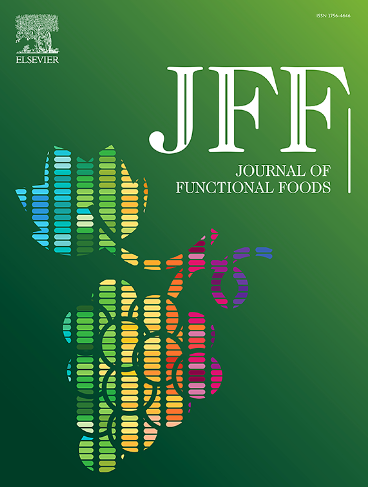Detection of anti-AD active ingredients from Huai yam using surface plasmon resonance technology and mechanistic exploration based on ERβ-harmonized inflammation and autophagy
IF 3.8
2区 农林科学
Q2 FOOD SCIENCE & TECHNOLOGY
引用次数: 0
Abstract
Huai yam is a model of “medicinal and edible homology” plants in China that have been used to treat Alzheimer's disease (AD) for a long time. This study prepared the AD model using 5 × FAD transgenic mice, explore the active ingredients and mechanism of Huai yam on AD using surface plasmon resonance (SPR) ligand fishing technology and biological methods, and provide an experimental basis for the clinical treatment of AD. Yam and affinity component (1-methoxycarbonyl-β-carboline) detected by SPR technology improved cognitive ability and neuronal damage, transformed immune cells from peripheral blood, reduced brain inflammation and apoptosis, and upregulated the levels of autophagy via ERβ. Moreover, 1-methoxycarbonyl-β-carboline also regulated metabolic disorders in 5 × FAD transgenic mice. These data provide a further pharmacological basis for the clinical application of Huai yam to prevent AD and help to understand the herbal function and “homology of medicine and food”.

应用表面等离子体共振技术检测槐山药抗ad活性成分及基于er β协调炎症和自噬的机理探讨
怀山药是国内“药食同源”植物的典范,长期用于治疗阿尔茨海默病(AD)。本研究采用5 × FAD转基因小鼠制备AD模型,采用表面等离子体共振(SPR)配体捕捞技术和生物学方法探索槐山药对AD的有效成分及作用机制,为临床治疗AD提供实验依据。SPR技术检测到山药及其亲和成分(1-甲氧羰基-β-卡波林)可改善认知能力和神经元损伤,转化外周血免疫细胞,减少脑炎症和凋亡,并通过ERβ上调自噬水平。此外,1-甲氧基羰基-β-碳碱还能调节5 × FAD转基因小鼠的代谢紊乱。这些数据为怀山药预防AD的临床应用提供了进一步的药理学依据,有助于了解怀山药的草药功能和“药食同源性”。
本文章由计算机程序翻译,如有差异,请以英文原文为准。
求助全文
约1分钟内获得全文
求助全文
来源期刊

Journal of Functional Foods
FOOD SCIENCE & TECHNOLOGY-
CiteScore
9.60
自引率
1.80%
发文量
428
审稿时长
76 days
期刊介绍:
Journal of Functional Foods continues with the same aims and scope, editorial team, submission system and rigorous peer review. We give authors the possibility to publish their top-quality papers in a well-established leading journal in the food and nutrition fields. The Journal will keep its rigorous criteria to screen high impact research addressing relevant scientific topics and performed by sound methodologies.
The Journal of Functional Foods aims to bring together the results of fundamental and applied research into healthy foods and biologically active food ingredients.
The Journal is centered in the specific area at the boundaries among food technology, nutrition and health welcoming papers having a good interdisciplinary approach. The Journal will cover the fields of plant bioactives; dietary fibre, probiotics; functional lipids; bioactive peptides; vitamins, minerals and botanicals and other dietary supplements. Nutritional and technological aspects related to the development of functional foods and beverages are of core interest to the journal. Experimental works dealing with food digestion, bioavailability of food bioactives and on the mechanisms by which foods and their components are able to modulate physiological parameters connected with disease prevention are of particular interest as well as those dealing with personalized nutrition and nutritional needs in pathological subjects.
 求助内容:
求助内容: 应助结果提醒方式:
应助结果提醒方式:


